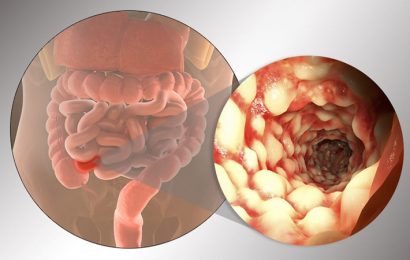

Eating Early May Aid Weight Loss
Eating earlier in the day may help you lose weight, and eating meals within a 10-hour window could improve blood sugar and cholesterol levels, new research shows.
Eating later in the day made people hungrier than did eating earlier, according to a study published in Cell Metabolism. Late eating also burned calories at a slower rate and led to fat tissue storing more calories.
Eating meals within a 10-hour window decreased the size of bad cholesterol particles, which may reduce the risk for heart disease, according to a second study in Cell Metabolism.
Other benefits: Adhering to that window also improved blood pressure and blood sugar levels among people with diabetes, high blood pressure, and high cholesterol.
Why this happens: Previous studies suggested an ideal eating window on the basis of human circadian rhythms, which regulate sleep and wake cycles and can affect appetite, metabolism, and blood sugar levels.

A Sepsis Breakthrough?
A novel technique may allow earlier detection of sepsis, or blood infection, which is crucial to successful treatment of the condition, according to new research.
Researchers using the technique were able to detect four causes of bloodstream infection after just 2.5 hours and with only 1 mL of blood, according to a study published in Proceedings of the National Academy of Sciences. The new technique was validated against clinical laboratory results that used blood cultures and DNA analyses to detect sepsis.
Early recognition: Treating sepsis requires recognizing symptoms early enough to administer drugs before germs overwhelm the body’s immune system.
Widespread blood infection: At least 1.7 million people in the US develop sepsis annually, and about 350,000 die during hospitalization or are discharged to hospice, according to the CDC.

Study IDs Menopause Mortality Risks for Women
A new risk scale developed in Spain identified specific factors that increased the likelihood of death among postmenopausal women.
The study, published in the Spanish Journal of Cardiology, examined data from the 2011 Spanish National Health Survey and included women older than 50 years. For each year that a woman ages, the risk for cardiovascular mortality increases by 14%.
Risk factors: The specific risk scale includes age, smoking habit, hours of sleep, physical activity, consumption of vegetables, diabetes, and hospital admission in the past year.
Risk scale: A score of six or more points on the risk scale increases the chances for cardiovascular death by 5% or more. That risk rises sharply with seven or more factors, the study said.
For more news, follow Medscape on Facebook, Twitter, Instagram, and YouTube
Source: Read Full Article


